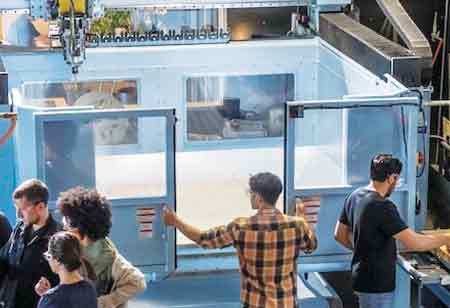THANK YOU FOR SUBSCRIBING
Here's What Will Change Manufacturing In 2020
Both the pressing and long-term future of the manufacturing industry will be defined by the expansion of several ever-changing and cutting-edge trends and technologies.

By
Apac CIOOutlook | Monday, May 04, 2020
Stay ahead of the industry with exclusive feature stories on the top companies, expert insights and the latest news delivered straight to your inbox. Subscribe today.
Both the pressing and long-term future of the manufacturing industry will be defined by the expansion of several ever-changing and cutting-edge trends and technologies. Most of which are positioned to have a meaningful impact in 2020, so it is important for firms to develop a sharp understanding of their functionality, growth over time, and how they will affect those within the business— both this year and in the future.
Below are two manufacturing trends to watch in 2020:
1. 5G or Smart Manufacturing
Smart factories are becoming the standard in manufacturing, and they rely on connected devices to leverage technologies such as artificial intelligence, automation, IoT, and more. Furthermore, these devices are competent in sensing their surroundings and interacting with one another. As factories of the future persist in growing, manufacturers need to realize that they should be able to adapt the networks that connect them–competently and effectively.
Besides, 5G networks offer industry opportunities to generate new revenue streams. Along with energy and utility, the business stands to gain the most from the rise of 5G. A report states that the projected addressable market in 2026 will be $113 billion, a considerable 7 percent potential revenue growth from existing service revenue forecasts.
The factories of tomorrow will rely genuinely on sensor technology, and they will notably feature connected tools making use of data to guide the tasks of the workforce. Accordingly, 5G’s high capacity, low-latency performance, and wireless flexibility make it the ideal choice to support manufacturers in these efforts.
2. Augmented Reality and Virtual Reality
When it comes to employing Augmented Reality (AR) and Virtual Reality (VR) in manufacturing, there is endless potential. Whether it is helping make processes more competent, improving product design and development, or preserving machinery more efficiently, the technologies are capable of becoming game-changers in the upcoming years.
VR lets its users move around a 360-degree virtual world and, in some cases, even interact with it. When using VR, real, physical settings are no longer a factor. With the advancements in technology, the virtual world is being reproduced better than before. AR differs in the sense that its users are required to be at a particular location to augment their experience of reality. In contrast, those who use virtual reality are entirely immersed in a virtual world. Manufacturers are becoming more proficient at finding ways to integrate these technologies within their organizations in an attempt to drive a future defined by digital connectivity. Also, it is observed that manufacturers today have adopted or will adopt AR and VR in the coming years.
See also: Top AR/VR Solution Companies





